Author Archive

Media Strategist and Digital Content Creator Sheree Martin interviewed me earlier this week for her Birmingham Shines Podcast.
You can listen to the podcast by clicking here.
We discussed the value of both inspiration and research in the design process, ethnographic research, design thinking, college chemistry classes, how I decided to pursue a design career, as well as my favorite design book, The Design of Everyday Things by Donald Norman.
I also had the opportunity to plug Design Week Birmingham 2015 which takes place all next week.
Design Week Birmingham Website
Design Week Birmingham Facebook Page
My lovely wife Jessie and I were asked this summer to appear on the television show Flip My Food with Chef Jeff. Chef Jeff worked his way up from prison dishwasher to eventually become the executive chef at the Bellagio Hotel in Las Vegas. Since then he has had a show on the Food Network and written a New York Times bestselling memoir. For the past few months he has been traveling around the south with his food truck teaching both professional and amateur cooks great ways to make the food that they cook healthier.
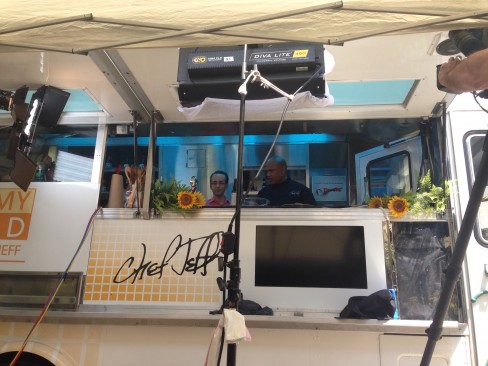
It’s showtime!
They found us through my wife’s food blog about the hidden gems of Birmingham’s food scene whattoeatinbirmingham.com. (I am her assistant which mostly means constantly trying amazing new places around town and occasionally taking a few pictures.)
From the audition process through filming, the entire process was laid back and fun. I had not been on the stage, so to speak, since playing James in James and the Giant Peach in middle school so I was not sure what to expect. I got there quite a bit early so I could watch the first guest cook with Chef Jeff. The crew introduced themselves and explained a little bit about how things worked. I found out we were making fish tacos which are one of my absolute favorites, but was also something that I had never cooked at home.

We used the box grater I designed for the southern slaw
Before I knew it I was in makeup and ready to hop onto the food truck. Chef Jeff took a moment to introduce himself and in short order we were filming. We used the box grater that I designed to grate the cabbage for the slaw, as well as my peppermill. (Chef Jeff even liked my box grater enough to take one on the road with him which was super flattering.) My favorite technique that I learned was how to fry the farm raised ‘bama catfish on the stove. Though I have developed a taste for fried okra, pickles and catfish since moving down here I had not yet learned to fry anything at home. The result was a very light fish taco with a southern twist due to the use of lightly fried local catfish and vinegar slaw. The fried catfish was incredibly fresh tasting and the cabbage slaw had a bright vinegar taste and a great crunch to it. The spiciness of his sauce was not overpowering and so the crispy catfish, vinegary crunch, and the heat of the sauce were in perfect balance. It made for an amazing fish taco.
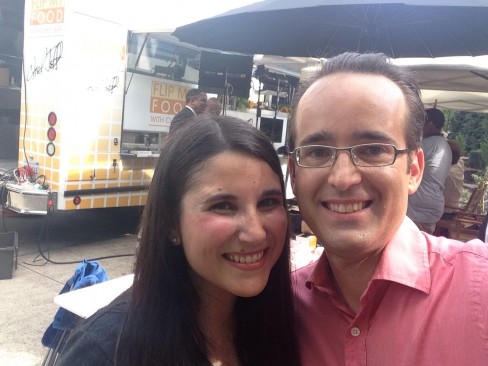
My wife Jessie and I shortly before they begin filming her segment.
(Why, yes, I am wearing makeup.)
My wife was up for filming next. I got to hang out with her for a few minutes before she headed onto the food truck for filming. Jessie and Chef Jeff made soba noodles with lobster which is making me hungry just thinking about it. My wife is extremely positive and upbeat and was great on camera. Sitting in a directors chair in the shade, watching Jessie and Chef Jeff play off of each other while they cooked together, I was able to think a bit about what an amazing experience this day had been.
Our Episode of Flip My Food with Chef Jeff airs on Fox 6 on October 31st here in Birmingham at 11:30am Central Time.

Many of you may be visiting to find out where to get the box grater I designed that has been featured recently on FLIP MY FOOD with Chef Jeff.
Please follow this link to order from Amazon.com: Click Here to Order
For those of you that did not see the program, my wife and I recently taped an episode of FLIP MY FOOD with Chef Jeff. It should air sometime in October 2014. I was asked to bring along some of the kitchen gadgets I have designed and we used the Fresco brand Box Grater and the Fresco brand Pepper mill on air. Both of these items are manufactured by my longtime client, Fresco Canada.
I will post more about our experience after the episode airs!
Well this is pretty cool. As many of you may know Michael Graves products moved from Target Stores to JC Penney back in 2013. This was part of then CEO Ron Johnson’s efforts to bring in younger / more affluent consumers. The articles I have read note that many of these design mini stores have been out performing the more traditional areas of the store. I was excited to see what my buddies at Graves could do with the slightly higher price point of a department store to work with and they did not disappoint. In addition to a lot of cool new items, they ended up launching a few products that I designed about 10 years ago when I was a staff designer there at Michael Graves Design Group in New Jersey. This is stuff that I never thought would see the light of day but also had always been really proud of, so seeing it at the store for the first time was super fun.

Michael Graves “Celery” Salad Servers circa 2013
Besides designing some of the newly launched items, I actually came up with the design language that appears in a number of other items as well. Take a look at the salad servers shown here. If it’s not obvious from the image, our internal nickname for the handle shape was “celery” as it has a U shaped cross section. We were asked to combine Graves with Scandinavian and this was my take on that directive. These salad servers first appeared in the Dansk collection back in the day in a maple finish and here we can see them in a darker finish. These came out pretty much exactly like my original sketch, which was pretty exciting to a young designer me just out of school. We did a million versions of everything and the work was very collaborative so if your design language had enough “stickiness” to make it through development and onto shelves it was a pretty good feeling. In this very delayed case it feels a lot like running into an old friend at a reunion and finding that life is treating you both pretty well.

Michael Graves “Celery” Kitchen Tools circa 2013
So management, and of course Michael, liked the “celery” design language enough that we were asked to create a whole line of kitchen tools in this vein. My manager at the time, the extremely talented Yuka Midorikawa headed up the project and along with my buddy Andrew March, we designed and developed the “celery” line of kitchen tools. Montage: A lot of sushi was consumed at late hours, Flaming Lips and Outkast was played, very precise line drawings were created along with beautiful CAD models and renderings, the client loves it, sadly it does not make it to the stores because the samples were not up to par, I move to Philadelphia to live closer to my future wife, we move to NYC, we move to Birmingham, I see Kevin Nealon on the street while traveling but I don’t say anything because I think celebrities deserve their privacy, I notice one morning that my sideburns are starting to go grey, and then finally the “celery” kitchen tools launch at JC Penney in 2013, fade to black. Other teams at the time adopted the “celery” design language too. There was Graves silverware (Curv.E flatware), mixing bowls and for the 2013 / 2014 collection for JC Penney they came up with a few more designs using “celery” including an ice bucket and bottle opener.

Michael Graves “Cruciform” pepper mill circa 2013
Another old favorite of mine was the “cruciform” Peppermill. Originally designed to be made in ebonized maple as shown in the 2004 Book Michael Graves Designs: The Art of the Everyday Object, the JC Penney version circa 2014 has a teak like finish that I think works really well. I was looking at teak mills of the 60s from Dansk and Scandinavian companies and this was really an homage to mills of that period with more contemporary proportions.
My wife and I spent a day in Little Rock recently as part of a long weekend. In search of some light food to eat we Googled “farm to table Little Rock” and found The Root Cafe. This place was fantastic and in a very cool part of town. I had the Banh Mi eggs which were wonderful. Nearby we explored the farmers market which was still going on, a cool design store called Moxy Mercantile, and also we took time to check out the Esse Museum which happened to be right next door to the restaurant.

I feel like I’m in a Swiss Design Magazine
Most of the museum moves in sequence through the decades, though there are a few cases grouped by other criteria such as exotic leather and fur. My wife commented that it would be nice if they provided more specific commentary on each of the individual bags, but the text associated with each case did do a good job of setting the bags within a historical context.
My wife and I had a great conversation with furniture / jewelry designer Morgan Hill who is the store’s creative director. She gave us a bit of background about how the museum came to be and the surrounding neighborhood. Her faceted wooden jewelry was for sale in the store and can be seen in my last image below. My iphone through the glass did not capture how cool these pieces are, her website linked above is worth a look!

Each floor case contains purses from one decade
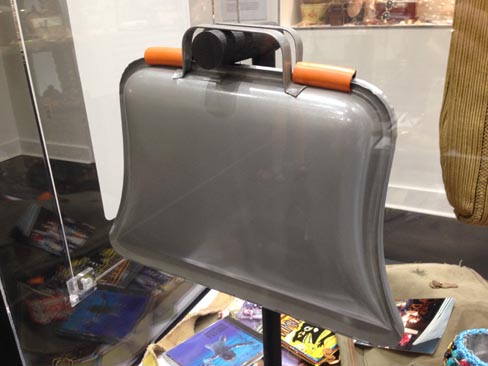
My favorite purse from the 90s is made of stamped steel
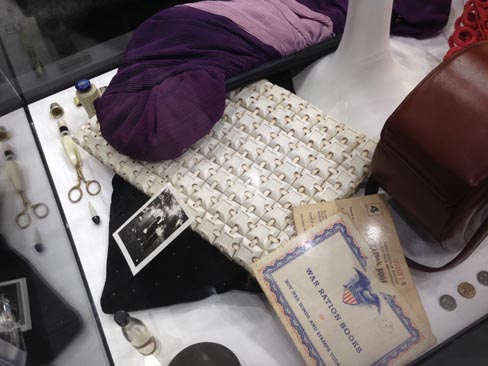
This looks like a great project for my 3D printer!
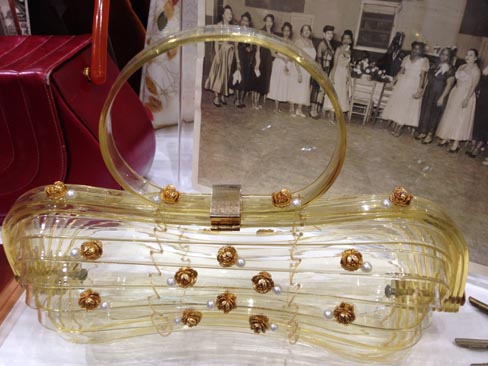
If you look closely, you can see that there is a pin on each side holding all of the plastic strips together.


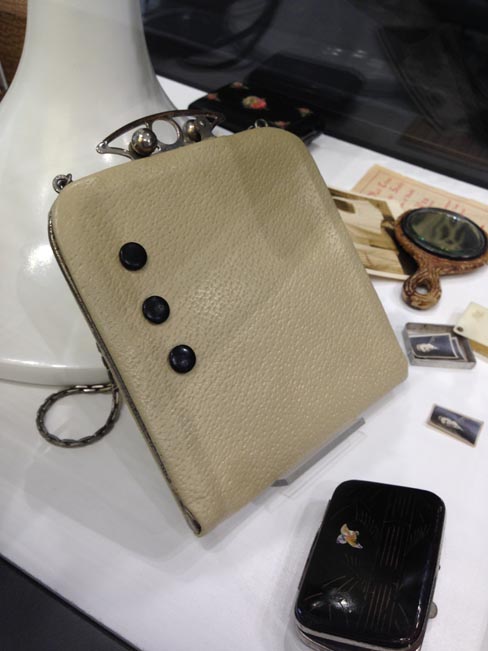


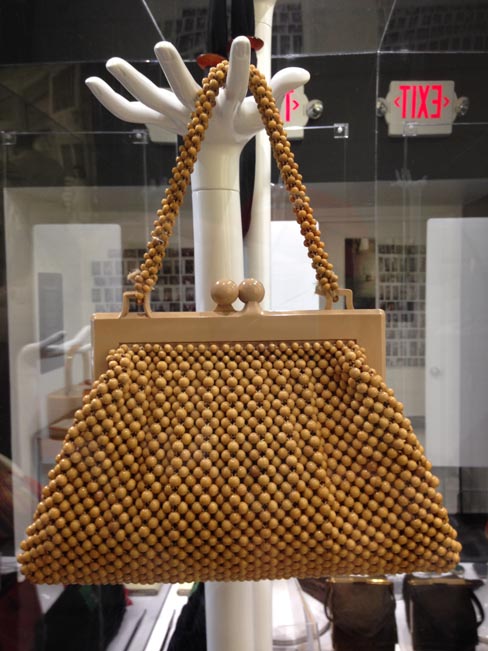


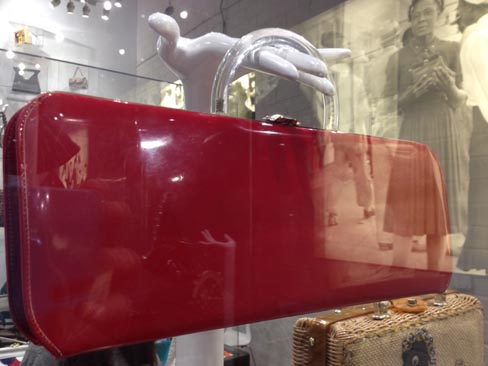


Jewelry from the very talented Morgan Hill is available in the gift shop
There is something for everyone at the current “Dream Cars” exhibit at the High Museum in Atlanta. I cannot imagine a more accessible exhibit. For one thing it has a rocket car on display. The exhibit consists of concept cars from the 20s through the 00s. Even the most adamant functionalist cannot help but be charmed by the beautiful forms, prophetic features, and incredible craftsmanship found in the cars on display.
“The Dream Cars: Innovative Design, Visionary Ideas” exhibit runs at the HighMuseum in Atlanta, Georgia until September 7th, 2014.

General Motors Firebird XP-21, 1953. This is a rocket car. No you cannot touch it. Don’t ask because they will just act annoyed and then watch you very closely from that point on. Even if you leave and come back wearing a sweater. They still know it’s you and they will be even more suspicious. I’m pretty sure they have all touched the rocket car after the museum closes. I know this because I asked the guard and he laughed like only a man that’s touched a rocket car could.
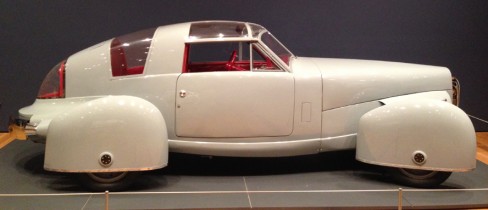
Tasco, 1948. The “fender / wheels” apparently did not work out that well, but boy are they cool looking.
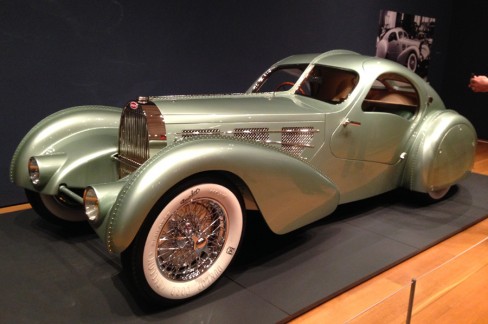
Bugatti Type 57S. This one is a reproduction as the original concept car no longer exists. The rivets along the fenders were structural but are a nice design detail as well. The original body was made of magnesium alloy if you can believe it?
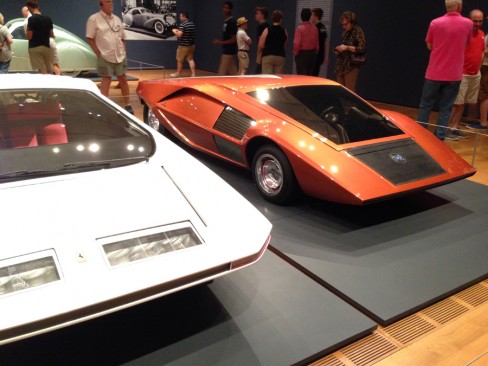
Pininfarina (Ferrari) Modulo, 1970 at left and Lancia (Bertone) Stratos HF Zero, 1970 at right. Two Italian concept cars from 1970 that look very “Buck Rogers” to me.
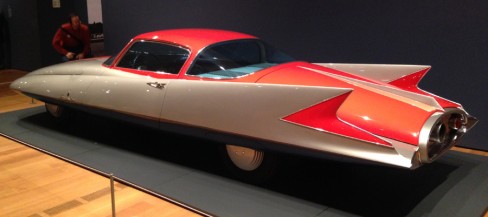
Chrysler (Ghia) Streamline X “Gilda,” 1955. This collaboration of American and Italian design is jaw dropping in person.
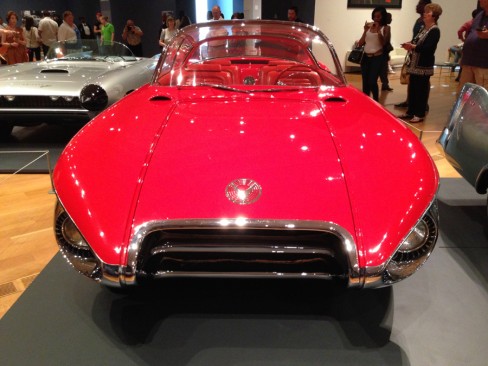
Buick Centurion XP-301, 1956. This bad boy included one of those prophetic features I was talking about. It has a rear view camera with a screen mounted on the dash. Can you believe this was conceived in the 50s and we are just starting to see it widely used in production cars today?

Back view of the stunning Buick Centurion XP-301, 1956.

Grille closeup of General Motors Le Sabre XP-8, 1951.
I recently participated in the Printers Fair as part of Design Week Birmingham, 2013. Situated inside Trim Tab’s new brewing space, this was a great event. The 2D printing talent in Birmingham and the region is quite impressive. Many who came by were seeing a working 3D printer for the first time. I demoed my version 1.0 Afinia H 3D printer and answered questions about architectural, product design, ceramics, and traditional 2D printing uses.
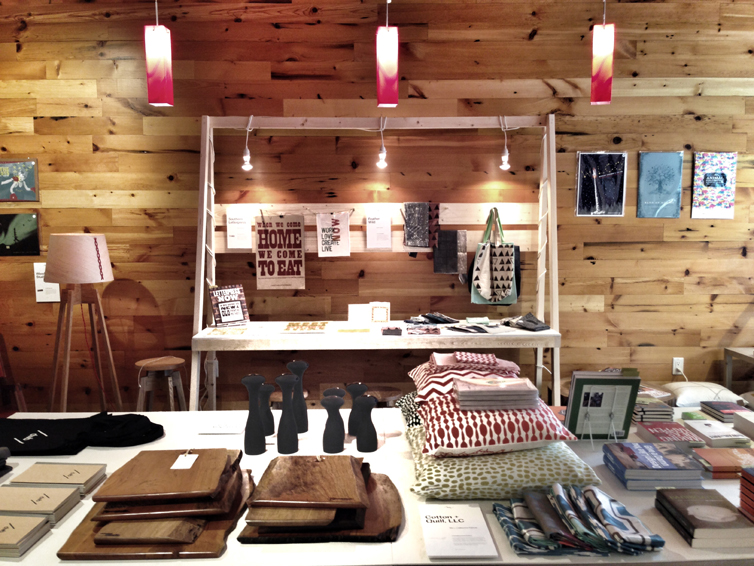
I had the pleasure of being involved in the planning of Design Week Birmingham 2013 which took place in October. This was a week and a day packed with non stop design goodness. Events included the Sign Painters Documentary on the art of hand painted signs followed by a Q and A with one of the film’s makers Faythe Levine, a Design Pop up Show showcasing local and regional talent including yours truly (notice my Peppermill above), a PechaKucha / Rapidfire event where 20 creatives from a varierty of disciplines presented 20 slides at 20 seconds each, a Printers Fair, and the opening of Vaguard Views exhibit at the Birmingham Museum of Art. The capstone event was hosted by local comedian / illustrator / designer Christopher Davis and included talks by the Architect John Peterson of Public Architecture and Designer Charles S. Anderson.

This machine mixes resin with fiber and chops it up to prep it for the compression molder
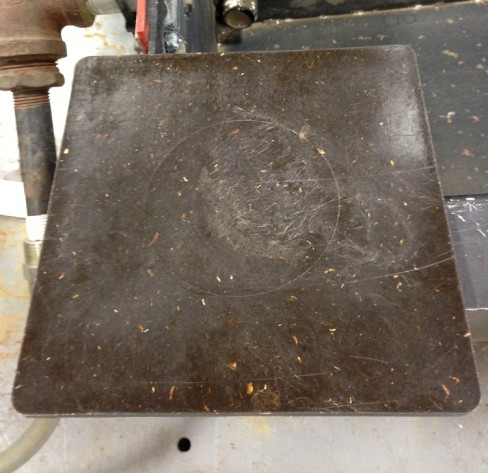
Natural composite consisting of banana fiber with partially recycled plastic
In the other lectures throughout the day a variety of other aspects about the recycling of composites were discussed including the importance of labeling and separating for ease of recycling, the challenges of chopping up old fighter jets into chopped carbon fiber, and the future of recycling asphalt roofing shingles. The strength of using chopped fiber versus virgin continuous strand was also discussed. Some vendors had begun to set out their product samples, such as Polystrand’s line of recycled corrugated thermoplastic plastic panels utilizing continuous fiber reinforcement.
After the lectures, there was a tour of UAB’s composites research lab. The facilities are used by the composite engineering graduate students both for original research as well as for R&D and manufacturing for private companies. Equipment included machines for testing as well as for manufacturing. Demonstrations for us included a machine that was used to create custom pellets where composite materials could be combined with resins in custom combinations. Most interesting to me was the combination of partially recycled thermoplastics that were combined with natural fiber such as banana fiber to create green composites. The fact that these could be formed on site was very exciting. They also demoed their compression molding machine with this green composite formulation.
- a green composite sample consisting of banana fiber and partially recycled plastic
For part 1 of this series, please click here.

Might these be the world’s first plastic book ends?
For those reading this that did not go to school for industrial design, we have a class called “materials and processes” where we are taught how things are manufactured and what they should be made out of. I remember many things taught to me by my “materials and processes” professor at RIT, Doug Cleminshaw. The man knows plastic. He wrote a book about it for one thing. Most impressive to me was the rumor that he designed the world first plastic book ends.

The biobased epoxy has been removed
So one of the things that we learned about plastics was that there are two main types of plastics, Thermosets and Thermoplastics. Thermoplastics are formed using heat and include plastics such as polypropylene (one of my personal faves), acrylic, and styrene. Thermosets are formed as a result of a chemical reaction and include epoxies, melamine, and Bakelite. This chemical reaction has traditionally been thought of as not being reversible. It was for this reason that Doug explained to our class that Thermosets were not recycled, while thermoplastics could be recycled a number of times until they degrade.
Chemical researcher Stefan J. Pastine, Ph.D. of Connora Technologies is working to change that fact. I saw him speak back in June at UAB’s Composite Conference here in Birmingham, AL. He has developed “the world’s first recyclable epoxy plastic”, called Recyclamine. Through an environmentally benign process that takes place at 100 degrees, Recyclamine can be recovered so as to be later reused. This absolutely blew my mind. This means that an old carbon fiber bike frame could theoretically one day be chopped up and completely reused. Not just the carbon fiber, but the expoxy “glue” that holds the carbon fiber together. Incredible. Carbon fiber and other high tech composites have always been great for the environment in their combination of lightness and strength which leads to impressive energy savings, but the fact that they could not be recycled was a major drawback. Dr. Pastine is currently working to make the process cost effective enough to be competitive with current resins used in composites, so keep an eye out.






































